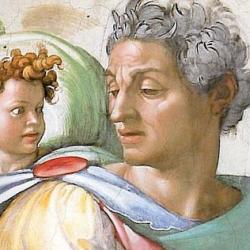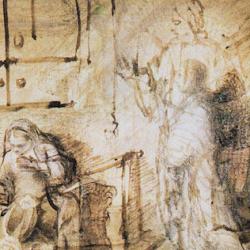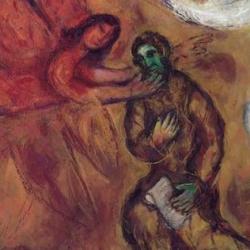In the dream of Pharaoh’s cup-bearer, he sees branches of a vine bud, blossom, and bring forth their clusters (Genesis 40:10). The budding vine was a sign of the cup-bearer’s restoration to his position in Pharaoh’s court. It signified his resurrection from prison and his ascension into the throne room of his king.
That is the same message Aaron receives when his rod buds (Numbers 17). The budding rod is a sign that he will be a fruitful tree in the house of God.
Putting these two passages together, we can see that the cupbearer’s budding vine has a priestly connotation. The bud is a sign that he is restored as a servant of the king’s house. And this makes one wonder if buds generally have a priestly connotation in the Bible.
Exodus 9:9-10, where boils “bud” on the skin, and Leviticus 13-14, where skin disease “buds” out on the skin, would appear to falsify the the thesis that budding has a priestly connotation. But the rite of cleansing for skin disease has a number of resemblances to the rite of ordination for priests. By his cleansing, the “leper” is restored to the priestly people. His “budding” skin might thus be taken as an inversion of priesthood, a “defrocking” mark on the vestments of his skin.
Psalm 92 uses the verb “bud” three times (vv. 7, 12-13), and it certainly fits the thesis, since the budding takes place in the house of the Lord. Verse 7 speaks of the wicked like grass “budding,” but this can be seen as a sign of a counterfeit priesthood. The grass “buds” but produces no fruit; it withers and dies when it comes into the presence of God. But the righteous is the true priest who flourishes like a palm tree in the courts of our God.
All this is background to the main point of exploration here, Isaiah 27:6, where Isaiah promises that Jacob will take root, blossom, bud, and become fruitful. Is that specifically a promise that Israel’s priestly task will be restored? A few details of the text suggest so. not only do we have the possible connection of the “bud” with the budding rod of Aaron, but we also have two other terms closely linked to the high priesthood. The restored vineyard, Isaiah says, will “blossom” ( tzutz ), and uses a verb that is the root of the word tziytz, the gold “blossom” that the high priest wears on his forehead (Exodus 28:36). And, finally, Isaiah says that the land will be “filled” with fruit and uses the verb male , used in the technical phrase for ordination, “fill the hand.”
Isaiah seems to be describing the restoration of the vineyard of Jacob and Israel specifically as a reinvestiture of the priestly people. If that’s the case, we can draw a further conclusion. The vineyard is feminine, the bride of Yahweh. The decking of the Bride in the vestments of the high priest suggests that the priest, as representative of the bride, wears quasi-bridal garments. That is confirmed by the description of the Bride in Revelation 21-22; the city-Bride is adorned with stones like the stones on the breastplate of the high priest. All the saints in Revelation, further, are in white, Bridal robes as they praise God for saving them and as they follow Jesus into battle. In addition to tying together some biblical-theological threads, this practically also provides an argument for liturgical vestments, and specifically for Bride-white liturgical vestments.









